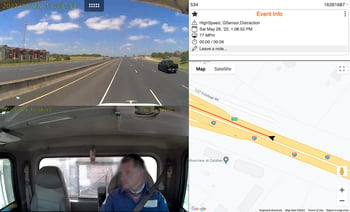
It’s an iconic image—11 men on a beam over Rockefeller Center with a hazy New York skyline in the background. They wear newsboy caps and knit hats, share cigarettes, casually juggle lunchboxes, and display bare ankles, arms, and even one chest. Though widely accepted now as a staged publicity shot, for generations the image has evoked a sense of American resiliency, pride, and work ethic.
Today it’s also an image that may cause cringes and concerns for the implied lack of safety precautions and concern for workers’ health and protection. Human safety is the biggest risk in construction. According to OSHA statistics, 4,764 workers died on the job in 2020, and workers in transportation and material moving occupations and construction and extraction occupations accounted for nearly half of all fatal occupational injuries (47.4 percent), representing 1,282 and 976 workplace deaths, respectively. Many factors affect risk on construction sites, including:
- Mistakes made by workers, such as not following proper procedures, taking shortcuts, or being careless.
- Insufficient training or lack of proper knowledge, when workers are not adequately trained in operating machinery, handling hazardous materials, or using safety equipment.
- Communication breakdowns between workers, supervisors, and contractors which lead to misunderstandings and unsafe practices.
- Lack of safety protocols including inadequate personal protective equipment (PPE), lack of safety signage, insufficient safety barriers, and inadequate safety training programs.
- Unsafe working conditions such as unstable structures, uneven terrain, falling objects, hazardous materials, and heavy machinery.
- Fatigue and stress impair workers' judgment and concentration, increasing the likelihood of accidents.
- Malfunctioning or poorly maintained equipment resulting in failures such as crane collapses, scaffolding failures, or faulty electrical systems.
- Poor site organization—such as inefficient site layout, cluttered work areas, and inadequate storage or disposal of materials making it difficult for workers to move safely.
- Inadequate supervision leads to workers not adhering to safety protocols and missing potential hazards.
Over the past 60 years, technology has significantly evolved and transformed construction sites, bringing about many advancements and improvements. From the beginnings of computer-aided design (CAD) and building information modeling (BIM) in the late 1950s and early 1960s to current advances in augmented and virtual reality, technology has long played a key role in advancing both the abilities and efficiencies of construction.
For instance, construction machinery has become more advanced, efficient, and safer over the years. Equipment such as excavators, cranes, bulldozers, and loaders has undergone technological advancements, including GPS (Global Positioning Systems) and automation features, enhanced operator controls, improved safety systems, and better fuel efficiency. Robotic automation—such as automated brick-laying—increases efficiency, reduces labor-intensive tasks, and minimizes worker exposure to safety risks. Stronger and lighter helmets, high-visibility clothing, fall protection systems, respiratory protection, and improved hearing protection devices not only reduce the human risk for death and injury but also corporate liability.
Advancements in communication technology have enabled real-time monitoring and control of construction sites from remote locations. This allows project managers and supervisors to check progress, track equipment, and address safety issues without being physically present on the site. Remote monitoring also facilitates quick response to emergencies and better coordination between teams. In addition, mobile apps and software have become essential tools for managing projects, communicating with team members, accessing blueprints and specifications, performing safety inspections, and tracking progress.
One of the most impactful technologies on construction is the Internet of Things (IoT). IoT technology has been increasingly adopted in construction, enabling the integration and communication of various devices and sensors. IoT devices can monitor equipment performance, track materials, collect data on site conditions, and enhance safety through real-time monitoring and predictive analytics. Let’s dive a little deeper into how IoT technology can address many of the risk factors discussed above to improve safety and reduce risk on construction sites.
Increasing Awareness of Proper Procedures
The combination of equipment management software and mobile technology makes it easy for construction sites to mandate inspections, safety equipment, and more, even when on-site supervisors are missing or otherwise occupied.
![]() For example:
For example:
- Inspections can be mandated at the start of a day to ensure that vehicles and equipment are in good working order before projects begin.
- QR (Quick Response) code tags can be incorporated into inspections to confirm the presence of mandatory PPE, fire extinguishers, safety harnesses, or other equipment depending on the job site and project type.
Creative applications of inherent software features can also be used to improve safety adherence on sites. Many software solutions allow assets to be “grouped”; assets can be tagged with low energy Bluetooth (BLE) trackers or cellular/GPS devices and the system identifies if items in a group are not nearby. Tagging a box housing safety harnesses with a BLE tracker, and pairing it with GPS-tracked scaffolding, can highlight if the safety harnesses are not present while workers and machinery are in use near the scaffolding. Technology may not be able to force workers to wear safety equipment but can make it easier to spot problems before they become injuries.
Improving Communication Between Field, Shop, and Office
Playwright George Bernard Shaw is credited with saying, “The single biggest problem in communication is the illusion that it has taken place.” IoT technology helps erase that illusion. With a documented, digital, and easy-to-use workflow that crosses the barriers between office, shop, and field, communication about issues with machinery, needed assets, and preventative maintenance are not illusions but facts.
Collecting real-time use data from machines and vehicles allows equipment managers to set preventative maintenance schedules based on actual mileage or hours of use rather than more nebulous time frames. OSHA recommends preventative maintenance as a key component in hazard prevention and control. A strong preventative maintenance program ensures machinery and vehicles are in safe operable condition and avoids missing key equipment on job sites that could create safety hazards.
Using digital workflows for inspections, maintenance requests, and work orders also ensures that everyone in the chain of command understands when safety issues have been spotted, alerts all key players when work orders are assigned and in progress, and mandates documentation through notes and images of completed work. Automating notifications based on role, type of asset, or job site, also ensures that there are no gaps in communication preventing required equipment from being replaced on projects.
Using AI (Artificial Intelligence) Technology to Save Workers from Themselves
IoT has wide-ranging benefits for safety, but sometimes it needs a little help. That’s where artificial intelligence (AI) can be a game changer.
 AI is most commonly used in camera technology—dash cameras, site cameras, and even cargo cameras. Paired with IoT, AI-driven video can provide a complete picture that not only intervenes immediately when safety issues are detected but also allows safety managers to review issues and revise policies.
AI is most commonly used in camera technology—dash cameras, site cameras, and even cargo cameras. Paired with IoT, AI-driven video can provide a complete picture that not only intervenes immediately when safety issues are detected but also allows safety managers to review issues and revise policies.
When AI cameras are focused on in-cab driver behavior, many of the safety issues caused by fatigue and distraction are mitigated. Safety managers can specifically target their educational programs for the most common safety issues for their drivers. They can also use that footage to help fleet managers find solutions to previously unknown safety issues. For instance, if employees are frequently witnessed using their phones for delivery directions, a decision might be made to better utilize equipment management software to optimize and share dispatch directions via mobile apps.
While many tracking systems in vehicles alert managers to safety events such as harsh braking or speeding, camera footage fills in the circumstances around those issues and allows safety personnel to collaborate with managers to correct and improve these conditions. An example:
A fleet manager notes that most harsh braking events happen between 11:30 a.m. and 1:30 p.m. The safety manager views dash camera footage during this time and sees that drivers are in heavier lunchtime traffic and are also often eating their lunches while driving. Together, the safety and fleet managers work to adjust schedules so that drivers are on the road during lighter traffic times and have sufficient time to eat when not driving.
Technology helps construction companies accomplish more, overcome labor shortages, save money, and improve productivity. Applied correctly, it can also make a monumental difference in safety compliance, improvement of training and safety programs, and mitigation of risk and liability for the company.
This article was originally published in the September/October 2023 issue of California Constructor.
References:
About Elizabeth Torrez
Elizabeth Torrez is the West Region Territory Manager for Tenna with 18 years of experience in the construction industry, focused primarily on the California market. Elizabeth spent a number of years working for heavy civil construction companies specializing in wet utilities, and four years with United Rentals Trench Safety. She has extensive first-hand experience in assisting contractors with solutions for asset and fleet management. Elizabeth serves on the State Board of Directors for AGC of California, and is a member of UCON, NAWIC Los Angeles, and The Beavers Association.
